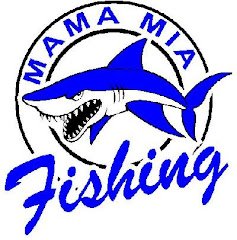The question most often asked of successful saltwater fly anglers is, “What flies do you use?” But the more revealing question is what fly lines do you use? Some might say the fly is everything when it comes to catching fish. After all, it is called “fly” fishing. And I must admit that there have been certain times in my own experiences when that magical pattern was the only thing to elicit strikes from reluctant fish. One design picked from among the many would somehow hold all the charm. There is no denying it; we all have our favorite “go-to” flies. But more often than not, success for the salty fly angler is defined by how a fly is fished rather than the actual selection itself. Size, profile and silhouette are the key factors to a fly’s success, much more significant than anatomical precision. And above all else, how a fly behaves in the water is the most critical element. If I might proffer a contrarian view, the fly is not always the key to the kingdom!
The goal when fishing any pattern is to replicate the movements and behaviors of natural prey; in essence, to create the illusion of a familiar food source that appears to be easy pickings. Salty fly anglers should attempt to match the natural movements of natural prey. A key to achieving this is utilizing the ideal fly line for a given situation. Unless I am fishing top water flies exclusively or fishing extremely skinny water over very wary fish, I rarely employ the use of a floating fly line. Almost all of my saltwater fly-fishing involves the use of some form of intermediate or high density sinking tip, or a complete sinking fly line. Simply put, sink-tip and full skinning lines are essential to any salty fly angler’s consistent success. Add to the equation that most striped bass feeding activity occurs beneath the surface - not on it - and I’ve come to depend on those sinking lines more than my choice of rod and reel. New York-based Cortland Line Company (http://www.cortlandline.com/) makes an excellent selection of very versatile saltwater fly lines that cover a broad range of water conditions and levels, and they work very well in Long Island waters. I am especially partial to their intermediate sink-rate Ghost Tip series and their selection of Quick Descent high-density sink tips, in 15 and 30-foot lengths. The running line on their Quick Descent products doesn’t hinge or bind when casting or retrieving. That is a big plus. They also offer an expansive selection of changeable Precision Shooting Heads to meet most any circumstance.
Certainly, there are good flies and there are bad flies, at least from the perspective of pattern structure and quality of tying. But chosing the right fly line and employing effective retrieves will bring the salty fly angler greater catch reliability than constantly laboring over the selection of the absolute “perfect” fly. Get an enticing fly into a bass’ feeding zone, make it look alive and more often than not, you’ll be rewarded with a hook-up, regardless of the feathers, fur or synthetics tied to the hook. When it comes to saltwater fly- fishing success it is better to fish the wrong fly right, than the right fly wrong! Vary your retrieves, and like all good baseball pitchers, change-up every once in a while. The fish will tell you what they like and what they don’t!
A weekly blog dedicated to fly-fishing the waters of Long Island and other world-class destinations.
About Me
- AP
- Following a long and fulfilling corporate career I moved on to pursue other interests as a full time outdoor journalist, book author, photographer and lecturer. I am also a strategic managment consultant involved in the outdoors, recreation and lesiure time industries. Fly fishing is my favorite pastime but I enjoy all forms of fishing and traditional outdoor activities. When I am not writing you will most often find me exploring my home waters of the Long Island Sound. I am equally as comfortable on a tidal creek in the wilderness of the Alaska Peninsula, or on a Gulf Coast flat or in the waters of a free flowing river. I love to wade, fish from a boat and kayak. If I couldn't fish, my life would not be complete. And should the day ever come when I no longer enjoy catching diminutive bluegill, I will part with all my gear and take up a new sport. Professional Affiliations: Outdoor Writers Association of America; New York State Outdoor Writers Association; Professional Outdoor Media Association; Association of Great Lakes Outdoor Writers. For further information please refer to my website at www.angelopeluso.com
Welcome and Enjoy
Welcome to AP's Fly Fishing Journal, a weekly blog dedicated to the pursuit of fly-fishing. Our focus will be the waters of Long Island and other world-class destinations. Whether you are a novice, intermediate or advanced fly angler, this space will be devoted to topics of interest and value to all who pursue game fish with the long wand. Topics covered will include fly-fishing commentary, fly tying, products and any and all issues relevant to today’s avid fly angler. If you are inclined to cast flies to fish , let this "journal" be your weekly guide to a rewarding time on the water. I will cover saltwater and freshwater, the beach and boating beats as well as the increasingly popular kayak fly-fishing scene. And we will look east and west, north and south - wherever fly anglers roam. I hope you enjoy my offerings. Thank you for stopping by.










